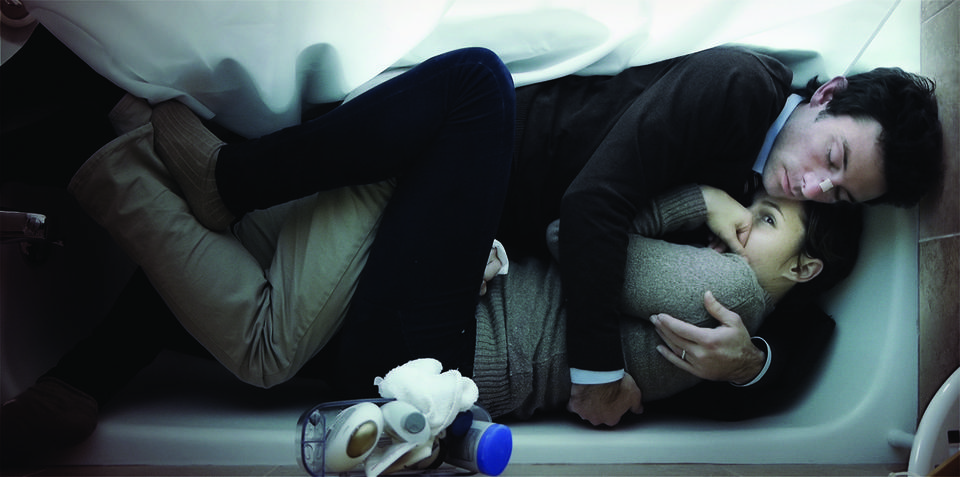
News
Cambridge Residents Slam Council Proposal to Delay Bike Lane Construction

News
‘Gender-Affirming Slay Fest’: Harvard College QSA Hosts Annual Queer Prom

News
‘Not Being Nerds’: Harvard Students Dance to Tinashe at Yardfest

News
Wrongful Death Trial Against CAMHS Employee Over 2015 Student Suicide To Begin Tuesday

News
Cornel West, Harvard Affiliates Call for University to Divest from ‘Israeli Apartheid’ at Rally
“Upstream Color” Goes Against The Current
Upstream Color –- Dir. Shane Carruth (ERBP) –- 4 Stars

It may not make much sense, but it lives up to its name in terms of aesthetic beauty.
“Upstream Color” comes to us after a nine-year gap from director Shane Carruth’s first film, the award-winning “Primer.” Imbued with the same science-fiction vibe as his debut, “Color” stumbles along plot alleyways and cinematic close-ups, all linked through a seemingly narcotic and ageless insect.
The plot is startlingly and mind-bogglingly confusing. Kris (Amy Seimetz) is drugged with grubs, knocked out, kidnapped, and operated on by a farmer, who seems to be doing experiments on both humans and pigs. Though tiny, these bugs feature prominently in the film, appearing again and again, lending the film a cyclical feel. Kris later meets Jeff, played by the director himself, and the film chronicles their relationship. The plot line jumps around from Kris’s paranoia to the amnesia of both Kris and Jeff, to the farmer—who also happens to be a composer who works with natural sounds—and the ever-present influence of Henry David Thoreau’s “Walden,” which is quoted directly in the film. All the while, the film is punctuated with beautiful color microbiological images that stream and flow throughout the plotline.
Despite the jumbled and disjointed narrative, the cinematography is so beautifully done that it makes the film a pleasure to watch, if not to understand. The content of each scene varies wildly from shot to shot, switching from a scene of Jeff and Kris getting coffee to a seemingly random panorama of the experimental pig farm with the farmer composing music in the background. However, within each individual frame, the camera’s movements match those of the people it captures, making each brief moment coherent and real within itself. When the maggots grow and multiply under Kris’s skin to the point that they crawl down the veins of her arms, the camera moves synchronously with the curling and uncurling of both the bugs and Kris’s slow convulsions, connecting the viewer with Kris and Kris with the creatures inside of her. The close-ups are artfully used to turn each shot and each scene into a moment, something to be appreciated in and of itself, more than something to be taken into the context of the entire movie.
The music is likewise perfectly timed, as is apt for a movie that features a composer as one of the characters. Every swell and beat of the piano and strings is accompanied by a change in movement or cinematography. Though the voices of the characters are occasionally purposefully out of sync with the on-screen speakers, adding to the general confusion, the music remains constant and is one of the few elements that ties the entire film together.
The colors used in the film play an important role beyond simply serving as visual appeal. The stream of colors, so to speak, is most brilliant and dazzling in the shots of nature, where we see the elemental forces of the world at work. Over time, a vibrant blue begins to emanate from the experimental pigs. When these animals end up in a river, the colors produced inside of them by the ageless bugs imbues the stream with life. This water then enters the white orchids and colors them the same vivid azure. Later, as when Kris dives in the pool for rocks and quotes “Walden,” she sees these same azure orchids as a pale, delicate yellow color spreads through them, mixing the colors. She then quotes Thoreau, “before the leaves are expanded, and it may be simply the result of the prevailing blue mixed with the yellow of the sand.”
Despite its difficult-to-follow plot, Carruth’s “Upstream Color” is a beautiful integration of cinematographic direction, musical score, and a breathtaking use of color. The movie compels the viewer to watch it again and again, not only for understanding, but for the pure appreciation of its beauty.
Want to keep up with breaking news? Subscribe to our email newsletter.
